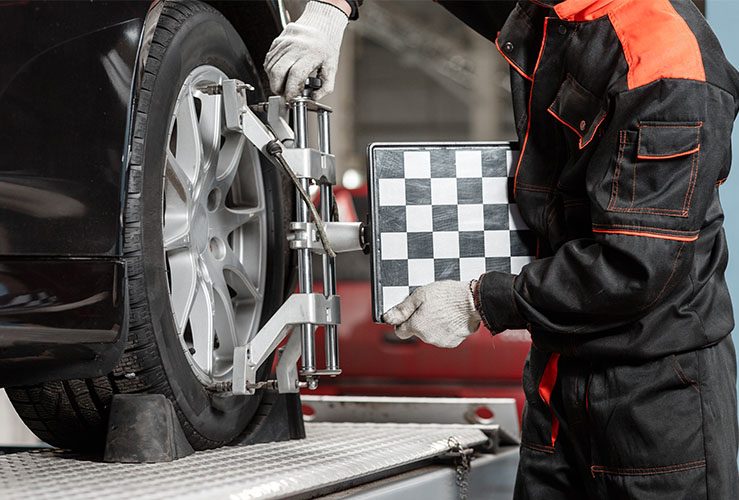Your wheels are attached to your car's axles and suspension system at three key angles. When your car first rolls off the production line, these angles have been precisely set by the manufacturer. Over time, however, these angles can change - and your wheels may be considered 'out of alignment'.

If your wheels are not aligned to the manufacturer's specifications, a number of potential negative outcomes may result:
- Your car's steering may not maintain a steady course; it may veer to one side or the other.
- Your tyres may be getting worn out more quickly because they are running at sub-optimum angles, or may wear out in an uneven way.
- Your steering wheel is not centred when driving straight.
- Your steering may vibrate
- Misaligned wheels may also nominally impact fuel economy.
Three angles affect your alignment: camber, toe and caster.
Viewed from the front of the car, camber relates to the top of the wheel angled outwards and the bottom angled in, or vice versa. Camber misalignment may result from old or worn ball joints, bearings or other components comprising your suspension system.
The toe angle is distinct to the camber angle. It's often compared to looking at your own feet: if your toes are angled outwards, they're 'toe out'; if they’re angled inwards, they're 'toe in'. It's the same with your wheels when viewed from the top. If the front of the wheel is angled out and the rear angled in, it's considered 'toe out' - and vice versa for 'toe in'.
The caster angle is a little trickier to understand. It impacts your steering, stability and cornering. More exactly, it's the angle of the steering axis when viewed from the side. Positive caster results in the steering axis angled toward the driver's seat, while negative caster is angled away from the driver's seat.
It’s important to understand that wheels are as a rule not set perfectly up-down, back-forward. The manufacturer sets your car’s wheels to deliver optimum performance, effective cornering and to counter any natural drag on the wheels - e.g. the wheels may be set to ‘toe out’ because as the car moves forward the wheels are dragged inwards, towards ‘toe in’.
This occurs when one side of the tread block is worn away more rapidly than the other - in a circumferential direction. When viewed from the side, the tread will appear and feel like saw teeth. Under-inflation or under-rotation are common reasons for heel/toe wear. If you think your car has an issue with heel/toe wear, visit your local garage.
This is when the tread is smooth on one side and sharp on the other. Poor toe alignment is usually responsible.
If your treads become worn on the inside or outside of your tyres, misaligned camber is the likely cause.
With all these issues, it's important to have your car's wheel alignment looked at by a professional. Misalignment can impact performance and over time result in more serious issues.




